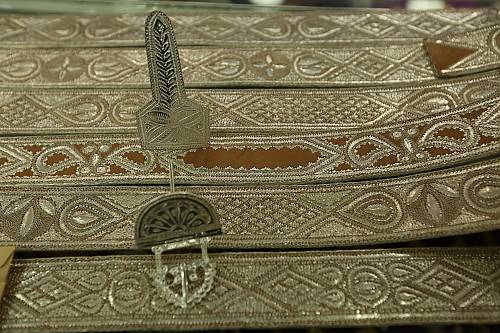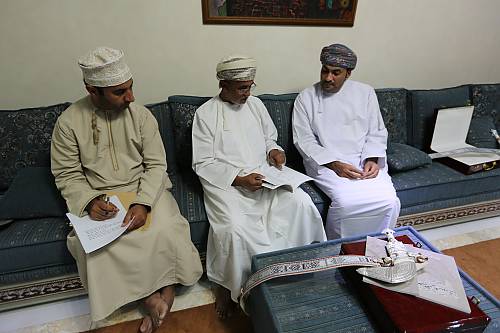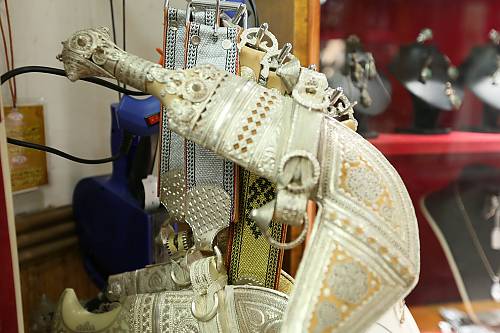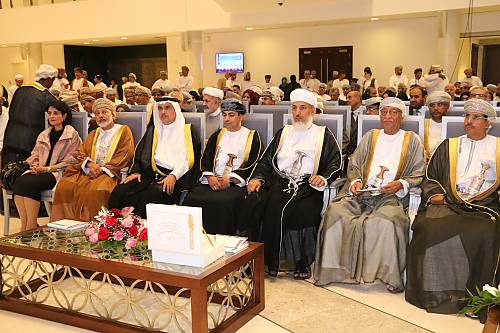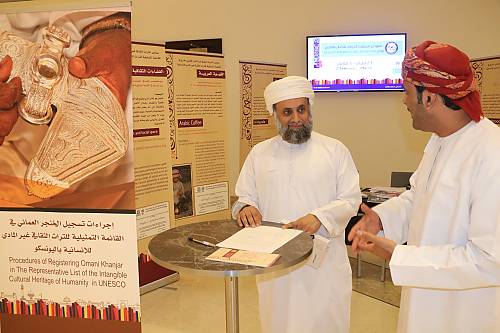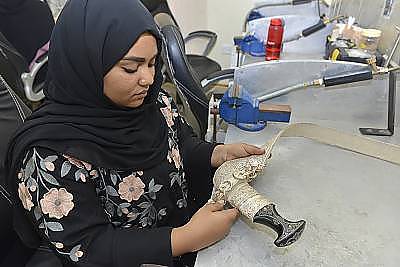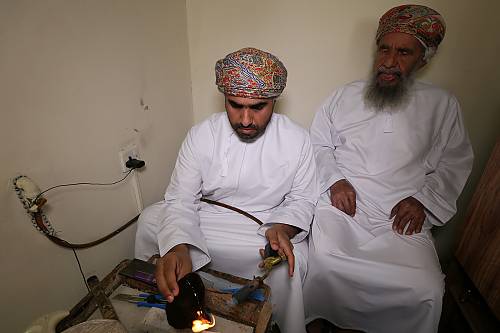Al-Khanjar, craft skills and social practices
Inscribed in 2022 (17.COM) on the Representative List of the Intangible Cultural Heritage of Humanity

Al-Khanjar is a part of traditional dress worn by men in Oman during national and religious events and special occasions such as weddings. An essential element of Omani culture, its manufacture requires significant knowledge and skills that are transmitted from one generation to next. The Omani khanjar is attached around the waist and includes a belt, handle, blade, scabbard and cover, all made from a variety of materials including wood, leather, cloth and silver. The materials, which are engraved with unique designs, are viewed as a reflection of the connection to the land. The khanjar is a part of the state emblem and plays a key role in many Omani customs and traditions. Historical sources and archaeological discoveries indicate that Omanis have worn the khanjar for centuries. Formal workshops and trainings also contribute to its transmission. A highly appreciated gift, the khanjar is one of the gifts that Omanis give to official guests as an expression of the cultural connection between nations. Many poems in the Omani literature also describe and praise the khanjar, and Omani artists and photographers have competed in documenting the object and the craft. Wearing the khanjar is also associated with many, if not all, Omani folk arts.
